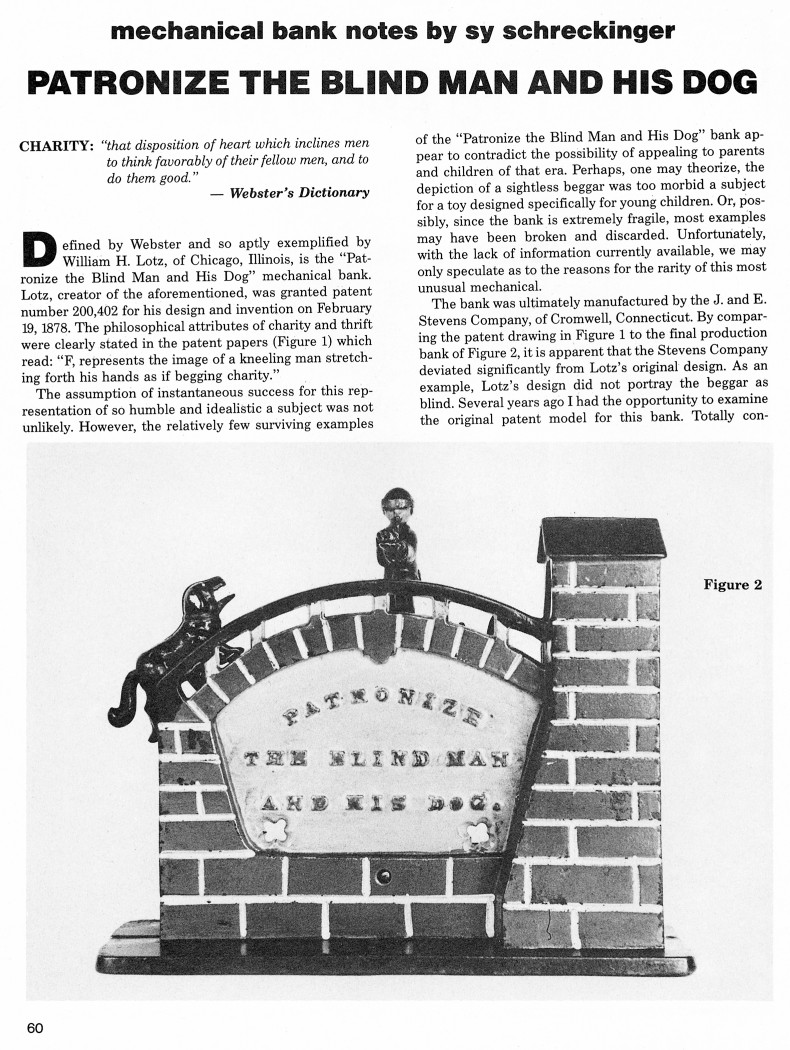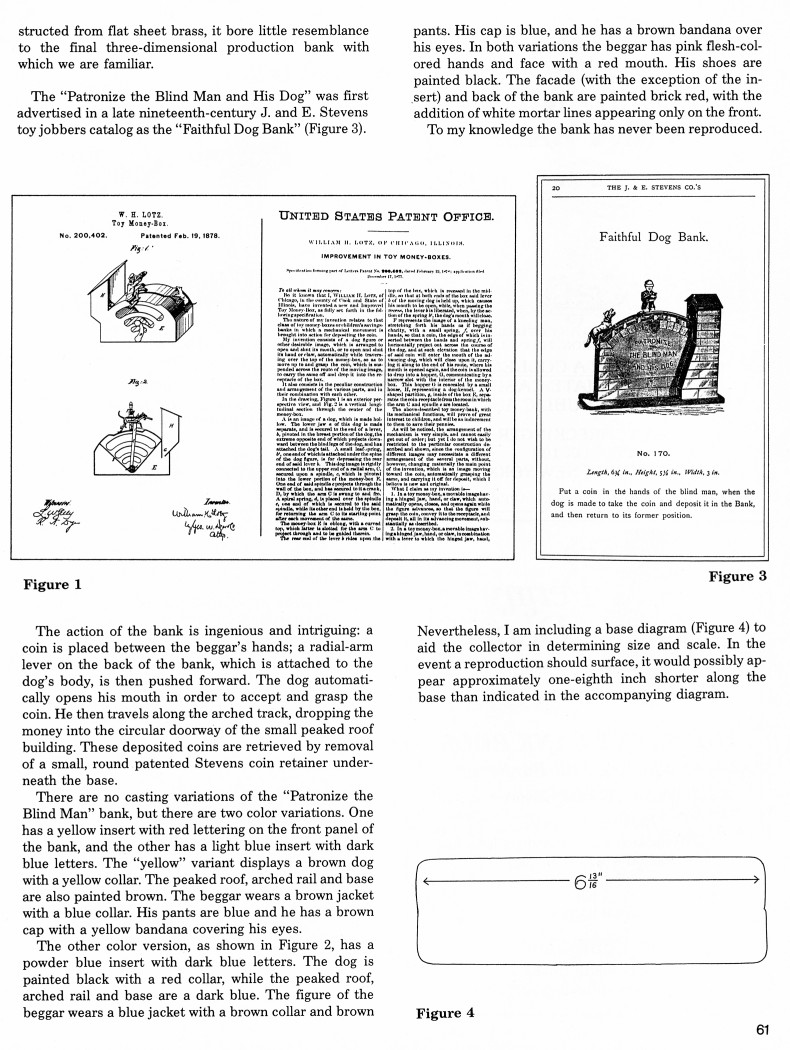|
Patronize the Blind Man
and His Dog
by Sy Schreckinger – ANTIQUE TOY WORLD Magazine – December, 1988
Charity: "that disposition
of heart which inclines men
to think favorably of their fellow men, and to do them
good."
— Webster's
Dictionary
Defined by Webster and so aptly exemplified by William H. Lotz, of
Chicago, Illinois, is the "Patronize the Blind Man and His Dog"
mechanical bank. Lotz, creator of the aforementioned, was granted patent
number
200,402 for his design and invention on February 19, 1878. The
philosophical attributes of charity and thrift were clearly stated in the
patent papers (Figure 1) which read: "F, represents the image of a
kneeling man stretching forth his hands as if begging charity."
The assumption of instantaneous success for this representation of so
humble and idealistic a subject was not unlikely. However, the relatively
few surviving examples of the "Patronize the Blind Man and His Dog" bank
appear to contradict the possibility of appealing to parents and children
of that era. Perhaps, one may theorize, the depiction of a sightless
beggar was too morbid a subject for a
toy designed specifically for young children. Or, possibly, since
the bank is extremely fragile, most examples
may have been broken and discarded.
Unfortunately, with the lack of information currently available, we
may only speculate as to the reasons
for the rarity of this most unusual mechanical.
The bank was ultimately manufactured by the J. and E.
Stevens Company, of Cromwell,
Connecticut. By comparing the patent drawing in Figure 1 to the final production
bank of Figure 2, it is
apparent that the Stevens Company deviated significantly from
Lotz's original design. As an example,
Lotz's design did not portray the beggar as
blind. Several years ago I had the
opportunity to examine the original patent model for this bank.
Totally constructed from flat sheet
brass, it bore little resemblance
to the final three-dimensional
production bank with which we are familiar.
The "Patronize the Blind Man and His Dog" was first advertised in a
late nineteenth-century J. and E. Stevens toy jobbers catalog as the
"Faithful Dog Bank" (Figure 3).
The action of the bank is ingenious and intriguing: a coin is placed
between the beggar's hands; a radial-arm lever on the back of the bank,
which is attached to the dog's body, is then pushed forward. The dog automatically opens
his mouth in order to accept and grasp the
coin. He then travels along the
arched track, dropping the money into the circular doorway of the
small peaked roof building. These deposited coins are retrieved by removal
of a small, round patented Stevens coin retainer underneath the base.
There are no casting variations of the "Patronize the Blind Man"
bank, but there are two color variations. One
has a yellow insert with red lettering
on the front panel of the bank, and the other has a light blue
insert with dark blue letters. The
"yellow" variant displays a brown dog
with a yellow collar. The peaked roof, arched rail and base are
also painted brown. The beggar wears a brown jacket
with a blue collar. His pants are blue and he has a brown cap
with a yellow bandana covering his eyes.
The other color version, as shown in Figure 2, has a
powder blue insert with dark blue letters. The dog is painted
black with a red collar, while the peaked roof, arched rail and base are a
dark blue. The figure of the beggar
wears a blue jacket with a brown collar and brown pants. His cap is blue,
and he has a brown bandana over his eyes. In both variations the beggar
has pink flesh-colored hands and face with a red mouth. His shoes
are painted black. The facade (with the exception of the insert)
and back of the bank are painted brick red, with the addition of white
mortar lines appearing only on the front.
To my knowledge the bank has never been reproduced. Nevertheless, I am
including a base diagram (Figure 4) to
aid the collector in determining size
and scale. In the event a
reproduction should surface, it would possibly appear
approximately one-eighth inch shorter along the base than indicated
in the accompanying diagram.
|

